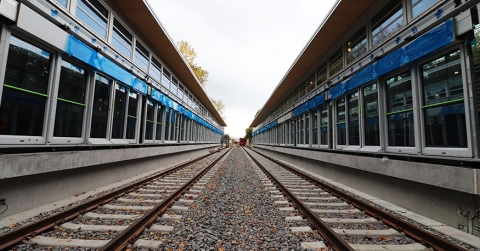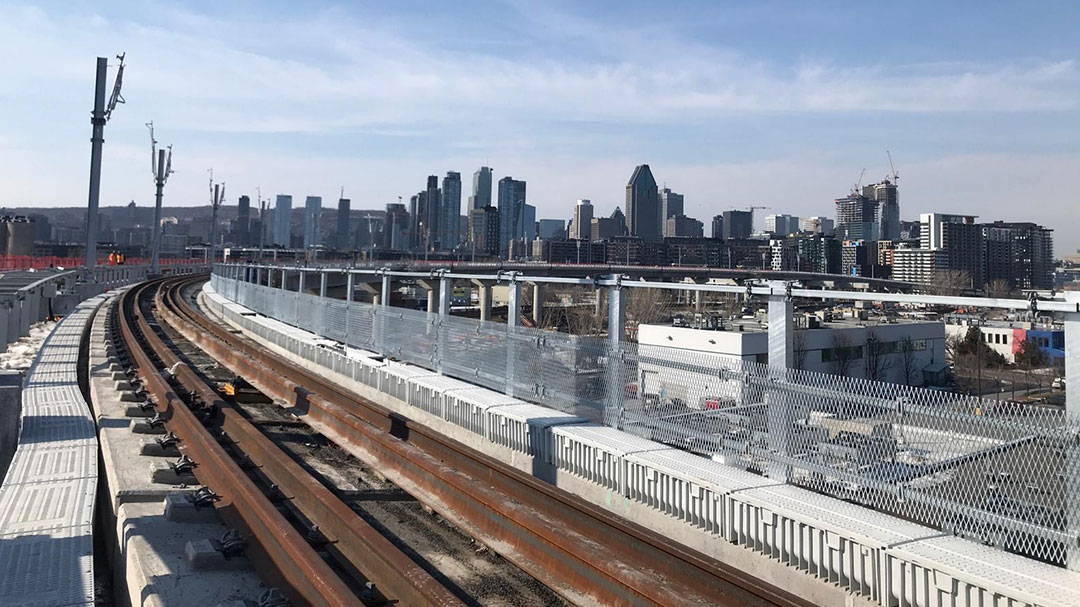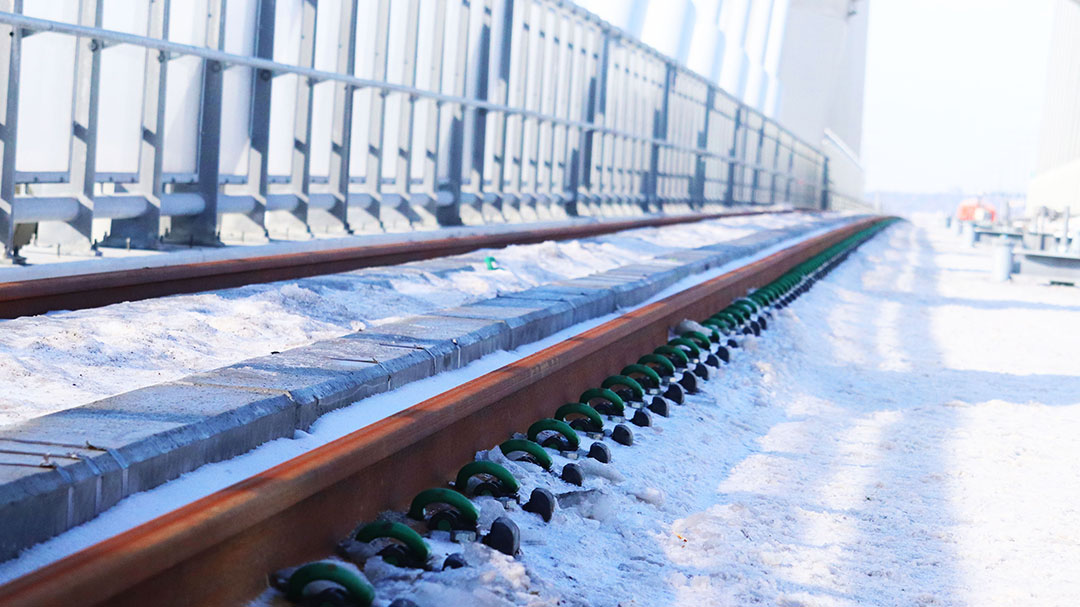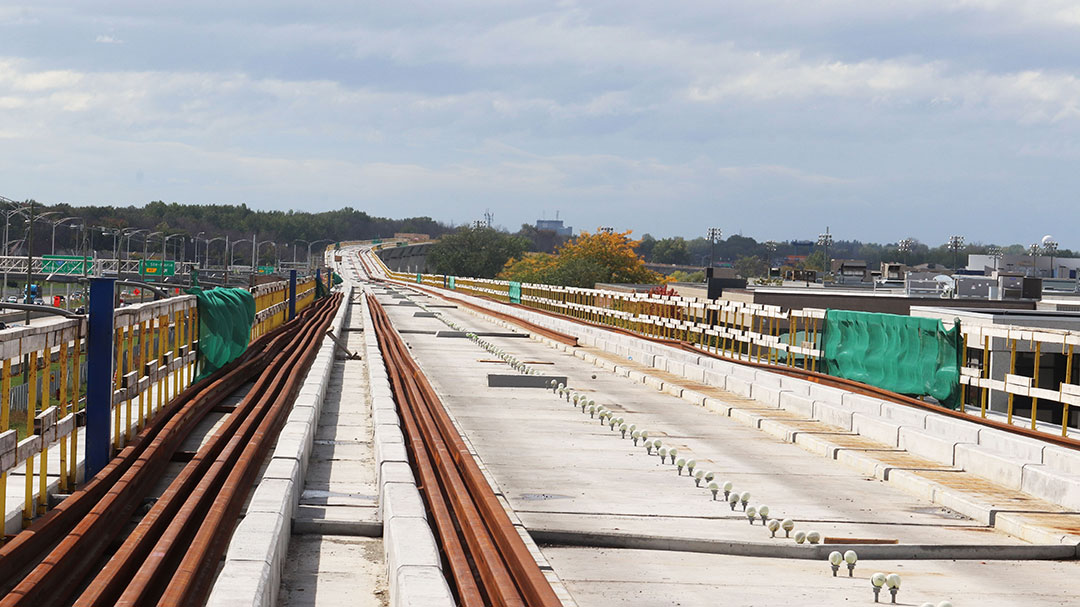
On track with the REM
Installing the rails is a prerequisite for running trains, the equivalent of paving the highway for cars. Although they may at first appear simple, rails have a surprising level of complexity when you take the time to look at them.
More than just steel rods
Alignments and adjustments with switches and crossings are a real challenge for railway engineers.
 In this picture, it looks like the rails are installed and the job is done. Make no mistake, they’re in place, but there is still a lot of painstaking—and important—work to be done: alignment and final adjustment.
In this picture, it looks like the rails are installed and the job is done. Make no mistake, they’re in place, but there is still a lot of painstaking—and important—work to be done: alignment and final adjustment.
Rails that react to the vagaries of the weather
The warmer it is, the more the rails will expand, while the colder it is, the more they will contract. When it is finally the time to fasten the rails, they must be secured to the ties at a neutral temperature—a process called “destressing the tracks.”
Installing the rails on the Samuel De Champlain Bridge
Rails are installed on the central deck of the Samuel De Champlain Bridge. The rails must adapt to the movements of the bridge structure, i.e. the expansion or contraction of the bridge spans. How is this done? The track expansion joints allow the rails to move as the bridge moves. The joints installed on the deck are particularly imposing: they can expand up to1,000 millimetres, instead of the usual 200 to 300 millimetres.
Did you know?
Affixing the rails directly to the bridge is extremely complicated because of the temperature that affects the rail-structure interaction. In order to deliver the South Shore segment this year, crews had to work on the tracks during the 2021–2022 winter period. Installing the track expansion joints on the Samuel De Champlain Bridge in the winter was a real engineering and logistical challenge. It also required workers to be extremely resilient, as they had to contend with a very cold winter in which the mercury dipped to -20°C.
 Close-up of the rails on the Samuel-De Champlain Bridge
Close-up of the rails on the Samuel-De Champlain Bridge
![]()
What is the status of the REM project?
- South Shore: 17.3 km of double track*
- Deux-Montagnes: 4.8 km of double track*
- Anse-à-l’Orme: 10.3 km of double track*
*Double track including ballast, ties, and fasteners
![]()
Types of rails
The type of rail installation is chosen based on the conditions and constraints of each sector.
Ballasted tracks are installed on a surface called sub-ballast. The ballast can be made of stones or gravel. Rather than being set in concrete or directly attached, this type of installation holds the rail system in place with the help of ballast. This type of rail can be seen on existing railroad rights-of-way. For example, this is the type of rail used at several locations on the Deux-Montagnes branch.
 Example of ballasted tracks near the Du Ruisseau station
Example of ballasted tracks near the Du Ruisseau station
Duo-block tracks are installed using a construction method known as top down. The already attached rails are installed on a tie (sometimes called a sleeper) to keep them parallel. Once the rails are aligned in their final position and installed on the structure, the entire assembly is poured into a concrete sidewalk. This method is called top down because it starts with the fixing of the rails and ends with the pouring of concrete.
 Example of duo-block tracks in the Griffintown area
Example of duo-block tracks in the Griffintown area
Direct fixation tracks are installed, as the name suggests, directly to the concrete structure. First the support plate is installed, then the rails and lastly, the rails are adjusted.
 Example of direct fixation tracks between Fairview-Pointe-Claire and Kirkland stations
Example of direct fixation tracks between Fairview-Pointe-Claire and Kirkland stations
Go futher
![]()
Rails: A field you’re interested in?
There’s still a lot of work to be done before the REM is commissioned. Nouvlr, the consortium responsible for the construction, is in full recruiting mode.
Visit their career site or email them your application directly: [email protected]